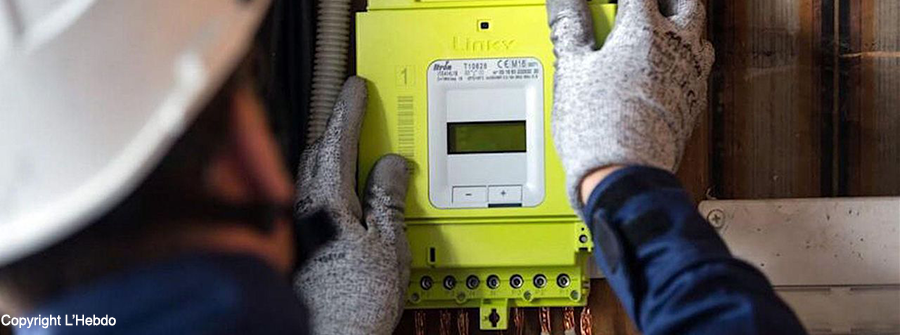
Estimating and understanding how much energy your household appliances use
How much energy do your fridge, oven, television, dishwasher and washing machine use each year? To find out and predict how much energy your household appliances use, we explain how you can calculate this yourself, and we give you estimates for all your appliances and show what impact these will have on your energy bill.
What is the average consumption of your household appliances ?
Do you think your bills are too high? Here are some tips to help you reduce the amount of energy your electrical appliances use and, therefore, the amount you pay each month! The average amount of energy used by your electrical appliances depends on a range of criteria, such as:
- The power of your appliance (expressed in watts);
- The frequency of use (daily, weekly, etc.);
- The energy class;
- The age of the appliance and the quality of the brand that produced it.
However, it is possible to give estimates for the electrical appliances frequently used in a typical household. Here is a room-by-room summary.
Kitchen: the fridge, dishwasher and oven are the most energy-intensive
The kitchen is without doubt the room in the house where energy needs are the greatest. But the amount of electricity used by your various household appliances depends mainly on their energy class and on the quality of the materials used and the brand.
To give you an idea of what these two factors represent in practice, we will analyse the kitchen essentials. It is estimated that a fridge-freezer corresponding to a class A energy label consumes an average of 200 kWh/year, while a similar class C model can consume up to 500 kWh over a full year – in other words, 2.5 times more!
Which energy supplier suits you best? Find it out with a simulation!
In terms of hobs, estimates can also vary depending on the technology used (ceramic, induction, cast iron, etc.) Assuming that two cooking zones are used daily at the rate of three times a day (once per meal), their annual consumption will be as follows:
- Ceramic: 260 kWh
- Induction: 210 kWh
- Cast iron: 360 kWh
As for the oven, it is actually one of the most energy-intensive appliances in the kitchen as it can easily consume between 160 and 200 kWh per year. The same applies to the dishwasher if it is used regularly (around five times per week): a class A dishwasher consumes an average of 200 kWh per year while a class C dishwasher consumes more than 350 kWh in a year.
Utility room: the washing machine and tumble dryer are a bad combination
Whatever their class, washing machines and tumble dryers are two essential household appliances for many families, but they are also energy-intensive, with consumption levels that may be close to the following estimates:
- At the rate of 200 uses annually, in other words four loads per week, a class A washing machine consumes an average of 180 kWh compared with 270 kWh for a less efficient and therefore more energy-intensive class C model;
- At the rate of 100 uses annually, in other words twice per week, a class A dryer consumes around 200 kWh, while a class C model can consume up to 500 kWh.
Living room: the television is the invisible enemy
The television is the most significant cost item in a living room, mainly because it continues to function and consume energy even when it is turned off. This is what is called standby consumption. This is an important subject which we discuss in more detail at the end of this article.
In addition, the amount of energy your television uses can also vary depending on the model, its features, and its year of manufacture. It is estimated that, based on four hours of use per day:
- A plasma screen consumes 480 kWh/year in use and 40 kWh/year in standby
- An LED television consumes 90 kWh/year in use and 2 kWh/year in standby
- An LCD television consumes 250 kWh/year in use and 20 kWh/year in standby
How to calculate the energy consumption of your electrical household appliances in kWh?
It is relatively simple for you to calculate how much energy your household appliances consume. You need to multiply the number of hours of daily use by the number of days of use per year. You then multiply the result by the power of your appliance expressed in watts. You will then have the amount of energy your electrical appliances consume expressed in kWh.
If you want to take the calculation further to find out the annual cost of your appliances, you simply multiply this result by the price per kilowatt hour you pay to your electricity supplier. You can find this price on the rate card sent to you when you took out your contract.
How to reduce the energy consumption of your household appliances?
Do you find that your electricity bills are too high? The reason could be that you are not using your household appliances correctly. Here are a few tips to help you spot potential problems linked to your electrical appliances and reduce the amount of energy they use.
Pay attention to the energy class
The energy class of your electrical appliances makes it easy to determine how efficient they are. Since March 2021, the A+++ to D classification has been simplified and replaced with a letter-based classification from A to G. It has become easier for consumers to identify the class as it is now compulsory for the energy label to be displayed on all household appliances. As a result, choosing your new appliances in store has never been easier.
In the revised classification, letter A is the most efficient and therefore least energy-intensive energy class. On average, it is estimated that a class A appliance consumes between 20 and 50% less electricity than its equivalent in class G (the least efficient and therefore most energy-intensive class).
So, even though class A appliances are often more expensive, their impact on your energy bills mean that, in the long term, you will get a quick return on your investment. The performance of a class A appliance means that it will use less electricity than an old appliance and it will also last longer.
Be vigilant about standby consumption
As explained above, standby consumption is public enemy number one when it comes to electricity consumption. But what is it exactly? In most cases, it is caused by chargers and other plugs that remain switched on even when the electrical appliance is not in use. This mainly involves extension leads, smartphone chargers, coffee machines and televisions.
It is estimated that, for a typical household, average standby consumption can increase bills significantly. In addition to your actual consumption, this standby mode costs you between 64 and 115 euro per year.
Change your consumption habits
For the good of your wallet and the planet, you need to adopt a number of consumption habits to reduce your bills. Here are some tips we recommend:
- Turn off the electrical appliances you are not using, especially if you are away for a few days;
- Defrost your freezer every three months or so. The thickness of the ice can increase your consumption by 10%;
- Run the washing machine and dishwasher only with full loads;
- Dry your laundry outside rather than in a tumble dryer,
- Cover your saucepans when boiling water;
- Invest in LED light bulbs which are less energy-intensive than traditional bulbs. It is estimated that an LED consumes an average of 9W for a power output of 60W;
- Leave space around your radiators when they are on;
- Bleed your radiators before winter arrives to increase their performance;
- Close your curtains in hot weather before switching on your fan or your air-conditioning.
What if, despite your efforts, your electricity bills are still high? In this case, the problem may be your supplier. Since the liberalisation of the energy market, competition is now the rule in Belgium, with an ever-increasing number of deals on offer. So how can you find the deal that is right for you? Compare the prices on the market! It couldn’t be easier. You can compare the current rates yourself via our online comparison tool or call our advisers for assistance. If they find a deal that is better for your household, they will take care of all the administrative procedures for you. It’s also free to change supplier in Belgium, which means there are no cancellation fees.
Contact one of our advisers
Also read on our blog

The news broke on 30 September: in view of the unprecedented rise in energy prices, some suppliers have decided to temporarily wit…

In July 2018, the Walloon and Brussels Parliaments voted in favor of installing smart meters – also known as communicating m…

The Colruyt group is now offering green electricity and natural gas to Walloon and Flemish citizens. This new service is handled b…

From 1 September 2015, VAT on electricity will increase from 6% to 21% for all private consumers. What are the implications of thi…


